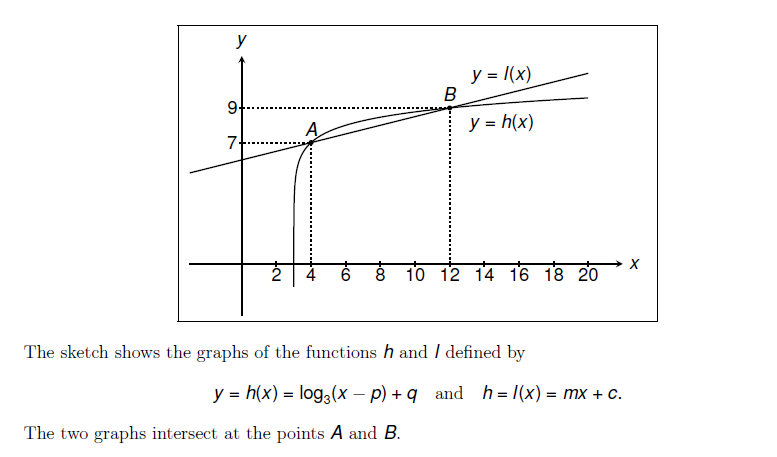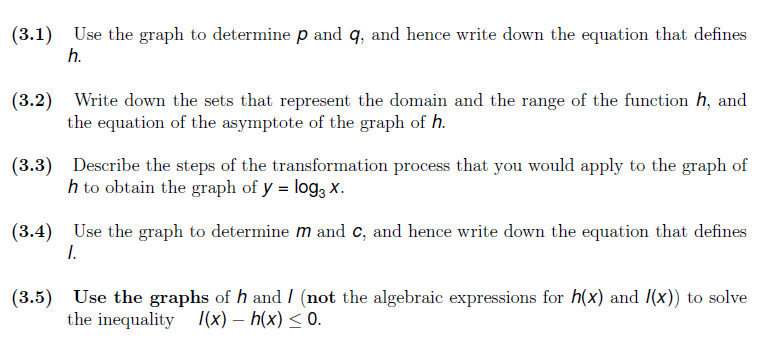(3.4) Use the graph to determine m and c, and hence write down the equation that defines 1. (3.5) Use the graphs of h and / (not the algebraic expressions for h(x) and /(x)) to solve the inequality 1(x) – h(x) < 0.
(3.4) Use the graph to determine m and c, and hence write down the equation that defines 1. (3.5) Use the graphs of h and / (not the algebraic expressions for h(x) and /(x)) to solve the inequality 1(x) – h(x) < 0.
Algebra & Trigonometry with Analytic Geometry
13th Edition
ISBN:9781133382119
Author:Swokowski
Publisher:Swokowski
Chapter5: Inverse, Exponential, And Logarithmic Functions
Section: Chapter Questions
Problem 18T
Related questions
Topic Video
Question
Answer Question3.4 and 3.5

Transcribed Image Text:y
y = /(x)
B
9.
A
y = h(x)
7
8 10 12 14 16 18 20
The sketch shows the graphs of the functions h and / defined by
y = h(x) = log,(x – p) + q and h= /(x) = mx + c.
The two graphs intersect at the points A and B.

Transcribed Image Text:(3.1) Use the graph to determine p and q, and hence write down the equation that defines
h.
(3.2) Write down the sets that represent the domain and the range of the function h, and
the equation of the asymptote of the graph of h.
(3.3) Describe the steps of the transformation process that you would apply to the graph of
h to obtain the graph of y = log; x.
(3.4) Use the graph to determine m and c, and hence write down the equation that defines
I.
(3.5) Use the graphs of h and I (not the algebraic expressions for h(x) and /(x)) to solve
the inequality /(x) – h(x) < 0.
Expert Solution
This question has been solved!
Explore an expertly crafted, step-by-step solution for a thorough understanding of key concepts.
Step by step
Solved in 3 steps with 27 images

Knowledge Booster
Learn more about
Need a deep-dive on the concept behind this application? Look no further. Learn more about this topic, advanced-math and related others by exploring similar questions and additional content below.Recommended textbooks for you

Algebra & Trigonometry with Analytic Geometry
Algebra
ISBN:
9781133382119
Author:
Swokowski
Publisher:
Cengage

Algebra & Trigonometry with Analytic Geometry
Algebra
ISBN:
9781133382119
Author:
Swokowski
Publisher:
Cengage